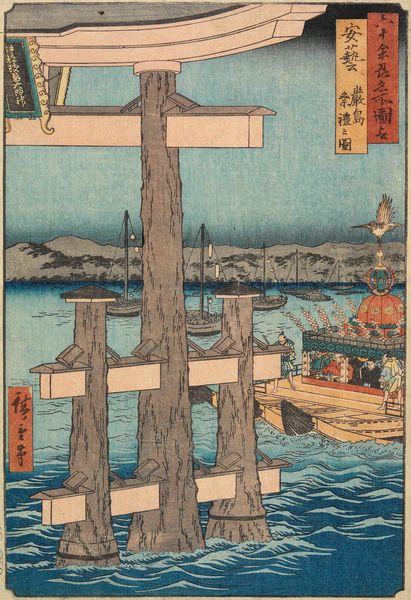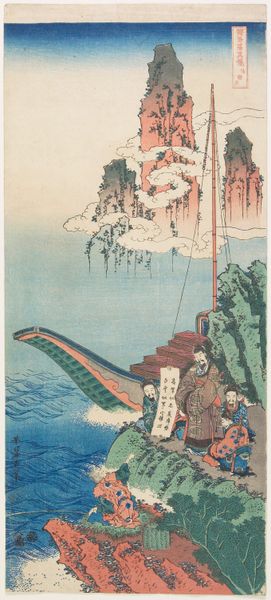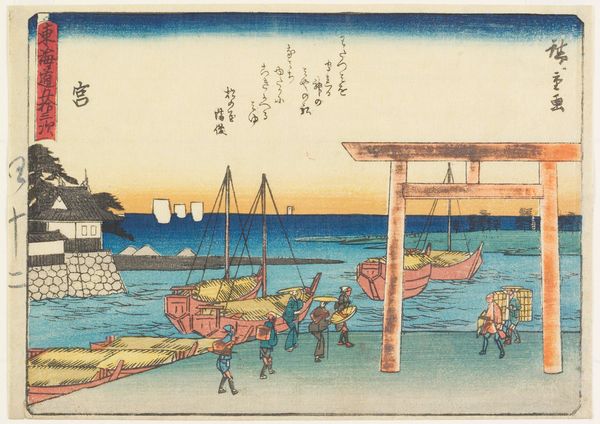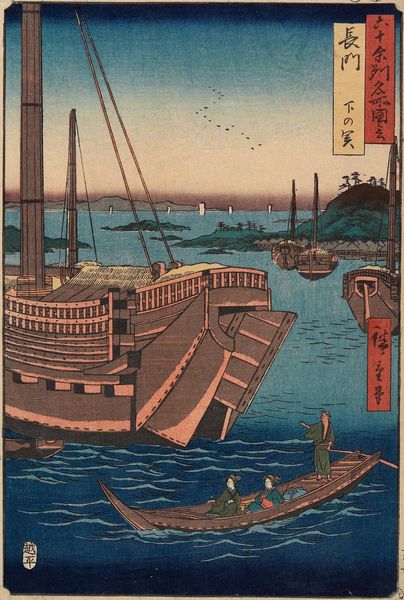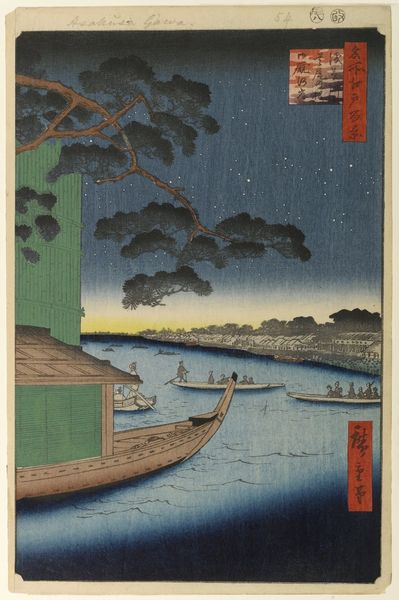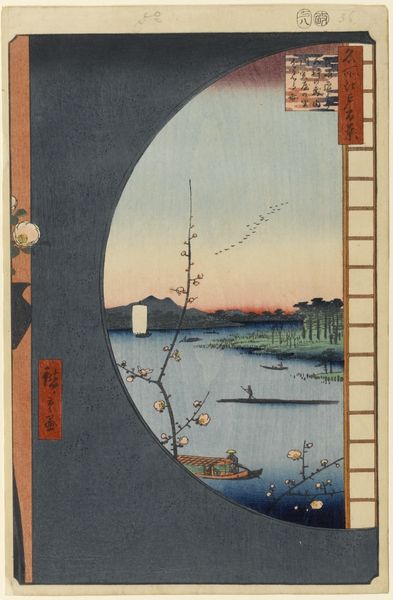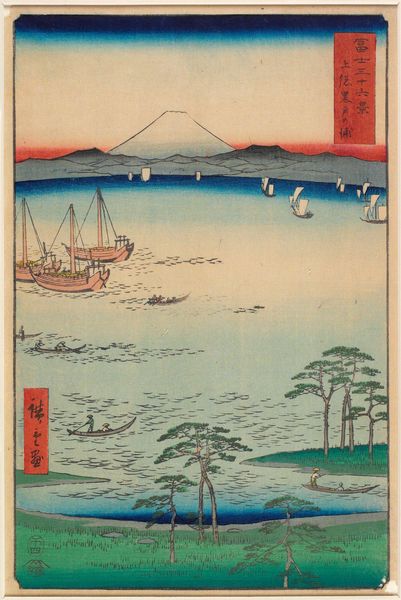
Scene of the Festival at Itsukushima Shrine Possibly 1853
0:00
0:00
print, ink, woodblock-print
#
water colours
# print
#
asian-art
#
landscape
#
ukiyo-e
#
japan
#
ink
#
coloured pencil
#
woodblock-print
#
cityscape
#
watercolor
Dimensions: 13 5/16 × 9 1/16 in. (33.8 × 23 cm) (image, vertical ōban)
Copyright: Public Domain
Editor: We are looking at Utagawa Hiroshige's woodblock print, "Scene of the Festival at Itsukushima Shrine," likely from 1853. The strong vertical lines of the torii gate rising out of the water really dominate the composition for me, it has an arresting quality. What do you make of its formal elements? Curator: Indeed. Observe how the artist employs the technique of bokashi, or shading, particularly noticeable in the water and sky, to create a sense of depth and atmosphere. Also consider the stark contrast between the solidity of the gate and the ephemeral nature of the scene itself. The gate is monumental, immutable, the festival transient, fluid. How does this juxtaposition affect your interpretation? Editor: That’s a good point – I hadn't considered the contrast so deliberately. So, you are saying that beyond its depiction of a scene, the construction of the print implies symbolic weight using formal methods? Curator: Precisely. Hiroshige has meticulously arranged these components, inviting us to contemplate not merely what is depicted, but the deeper relationship between permanence and impermanence, solidity and transience. Notice also how color, although limited, defines and separates elements of the artwork to better show pictorial space. What do you think about his technical skills? Editor: The gradations in color do bring that water to life, it seems. The artist truly manipulated ink and color so well, almost dissolving solid forms. I will look closer to prints going forward to spot formal arrangements like these! Curator: Splendid! Continued contemplation upon visual language cultivates more comprehensive appreciation.
Comments
No comments
Be the first to comment and join the conversation on the ultimate creative platform.
